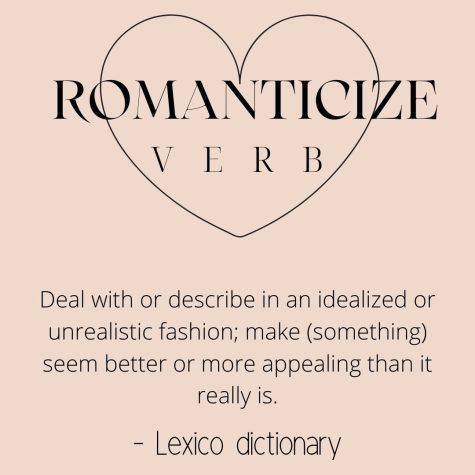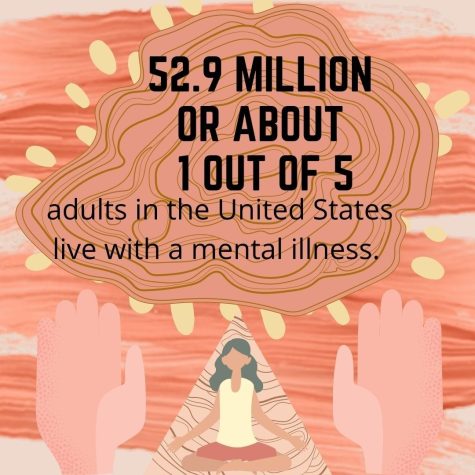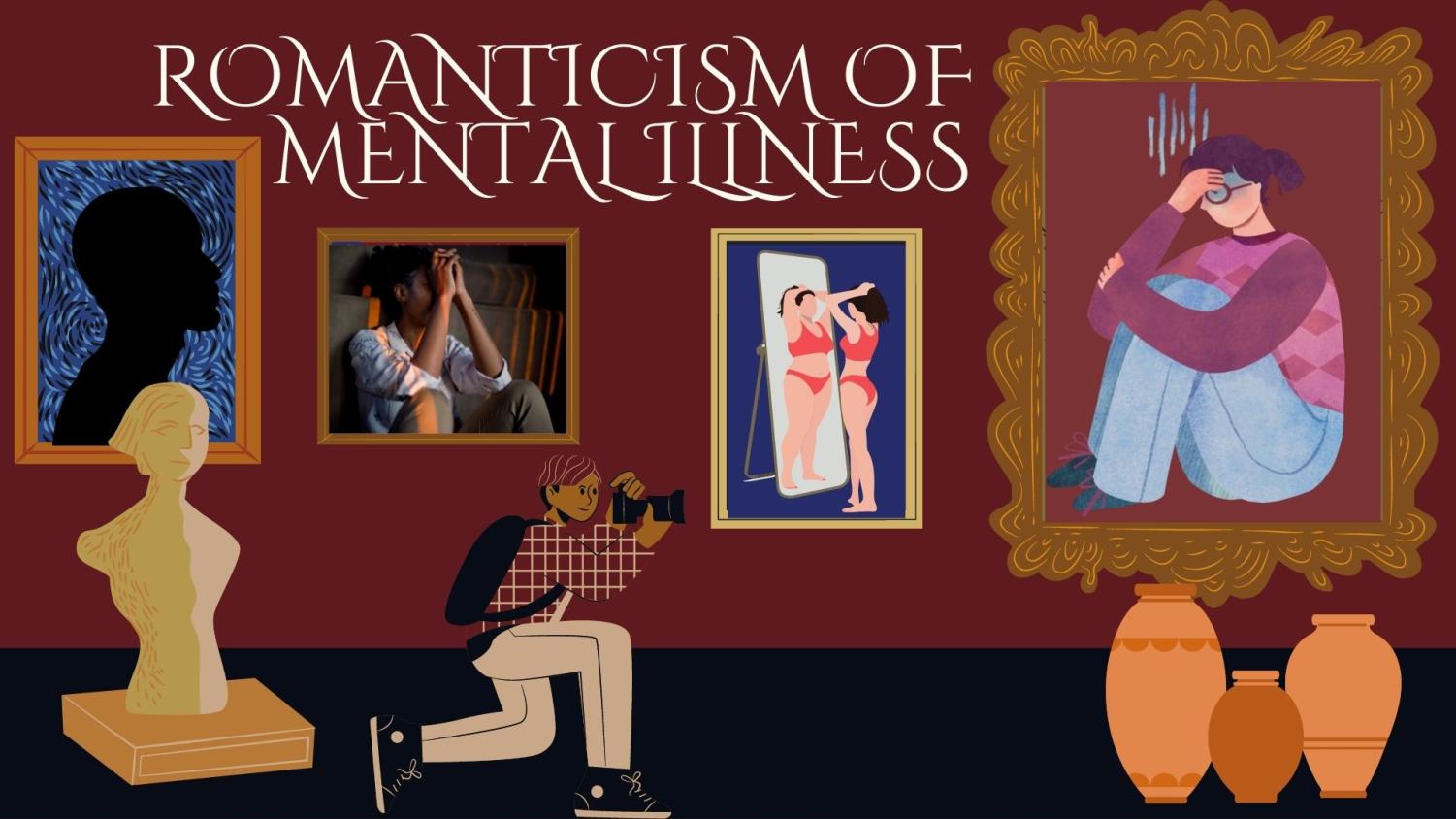Romanticizing reality: the attraction of mental illness
May 20, 2022
Since the early Victorian era, people glorified tuberculosis, one of the most common diseases at the time. Despite its high infection and mortality rate, crowds praised tuberculosis for its symptoms of pale skin and weight loss and people sought the disease to create a “fashionable” look for themselves. Tuberculosis shaped beauty standards as it emphasized a slender physique. A similar wave occurring in the past decade regarding mental illnesses takes rise with the popularization of mental illnesses in popular media and culture.
Efforts to destigmatize mental illnesses increase as information about them becomes well known. Thanks to the determination of the American psychological association, the National Alliance on Mental Illness and a multitude of other mental health groups, incredible efforts to destigmatize mental illnesses throughout the country bear fruit as communities accept and support those with mental illnesses now more than ever. The American Psychiatric Association defines mental illness as a health condition involving changes in emotion, thinking, or behavior. Unrealistic portrayals in media can add to the stigma or romanticize mental illnesses by making them attractive or desirable. These unrealistic portrayals can affect those living with mental illnesses by downplaying their symptoms.

An example of stigmatizing representation in a TV show takes place during a scene in “Breaking Bad” that sets in an alcoholic’s anonymous meeting, characters with unrealistic portrayals of people with alcohol use disorders with rigid appearances and rude mannerisms fill the room. This type of representation adds to the stereotype that people living with alcoholism speak and act aggressively.
“People romanticize mental illnesses as a phase or that everyone has one. It’s messed up because when the people who need help try to reach out, others call them emo or say me too,” sophomore Melissa Mayorga said.
The last decade has seen waves to reduce this stigma that follows along with mental illnesses. Campaigns to display mental illnesses as regular treatable illnesses couldn’t go as far without the use of entertainment media. Throughout the years, social media campaigns became an essential role to reduce the shame of mental illnesses and help people cope with living with mental illnesses.
In past years, social media has created a culture based on support and positivity around the globe. Communities and positive spaces include people of all ages, though some of these spaces entail the encouragement of mental illnesses. A quick look under pro-ana tags on social media platforms features content that promotes anorexia and bulimia. Phrases like “I love you to the bone” and “thinspiration” commonly appear among pro-ana tags encouraging skinny bodies. These communities personify eating disorders by naming them Ana, short for anorexia, and Mia, short for bulimia. Featured posts display pictures of extreme diet plans, encouragement for eating disorders and pictures glamorizing people with underweight bodies.
“Depression is months to years on end of feeling in a hole. That’s at least how I would describe my own depressive episodes, it’s different for everyone. Multiple media sources get mental illness wrong, it either exaggerates it to a point where it is completely impossible for someone to be like that and people are afraid of people with mental illnesses because of how the portrayal has demonized it or they believe they understand and they say they can help and it’s great they have the heart for it. However, they don’t understand and they further isolate the person. That’s how we as a society see the illness and we perceive it as a flat effect. We don’t understand its variants. We don’t understand that it can fluctuate. We don’t understand the multiple inner workings of mental illness,” sophomore Fabio Luis Martinez-Johnson said.
Instagram currently contains 25 million posts under the depression hashtag while also containing accounts with thousands of followers dedicated to posting content relating to depression or anxiety. Some posts center around aesthetics while others focus on humor.

Content promoting self-harm, schizophrenia, suicide and other mental disorders reaches YouTube in subliminal videos. These videos advertise their content by saying the viewer will achieve the results listed in the video title or description. The results listed usually include giving the viewer their desired mental illnesses or other traits the viewer desires. The thumbnails for these videos usually feature “cute” or “aesthetic” thumbnails such as “Hello Kitty” characters. More examples of these videos include developing schizophrenia, anorexia, and extreme videos promoting suicide.
Phrases about mental illnesses infiltrated the vocabulary of everyone at one point or another. Using mental illnesses as adjectives such as using anxiety to describe feeling nervous for a test or saying that “you’re depressed” in an inappropriate context can downplay people suffering from these illnesses by over-exaggerating a basic emotion or situation.
“I find it incredibly stupid and irresponsible. It irritates me and so many others. We feel that when someone says out loud ‘I’m so depressed it’s a stupid stupid statement because number one if you’re depressed you won’t be making it a public statement and when someone who shows no signs of it and decides to be sad for a day because they didn’t get what they wanted and say they’re depressed,” Martinez-Johnson said.
With the release of the popular Netflix show “13 Reasons Why” back in 2017, a story that depicts the suicide of a girl through cassette tapes that the main character listens to. Google searches related to suicide spiked following the show’s release, and alarming phrases such as “how to commit suicide” raised 26 percent after the release of the show. A study from the journal of the American Academy of child adolescent psychiatry drew a conclusion showing suicide rates of 10 to 17-year-olds increased 29% higher following the release of the show.
Portraying mental illnesses in a false or unrealistic way leads to negative effects on people living with said mental illnesses. Mental illnesses are seen as “tragically beautiful” or attractive instead of recognizing the issues they cause to someone living with a mental illness.

Flying together • Mar 24, 2024 at 4:11 AM
cool